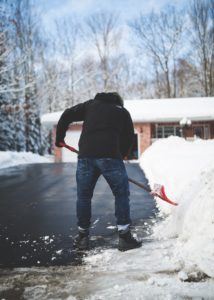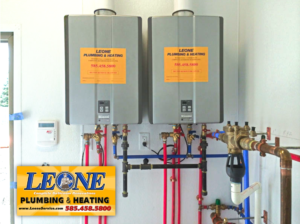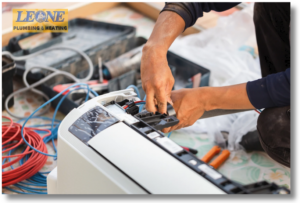 The importance of a well-functioning air conditioner becomes undeniable, especially during hot seasons. Not only does a properly maintained air conditioning system provide a sanctuary from the sweltering temperatures, but it also plays a crucial role in managing energy costs. In today’s blog, we will dive deep into the world of air conditioner repair, equipping you with the knowledge and tips you need to beat the heat without breaking the bank.
The importance of a well-functioning air conditioner becomes undeniable, especially during hot seasons. Not only does a properly maintained air conditioning system provide a sanctuary from the sweltering temperatures, but it also plays a crucial role in managing energy costs. In today’s blog, we will dive deep into the world of air conditioner repair, equipping you with the knowledge and tips you need to beat the heat without breaking the bank.
Common Air Conditioner Problems and Troubleshooting Tips
When your air conditioner is acting up, it’s essential to understand the common problems that can occur and how to troubleshoot them. Identifying the issue early on can save you from costly air conditioner repairs. Here are the common air conditioner (AC) issues.
AC is not Cooling
One common problem is a lack of cooling. If your AC is not providing the desired cool air, check the thermostat settings first. Ensure that it is set to the appropriate temperature and cooling mode. Check the air filters if the settings seem correct but there’s still no cool air. Dirty or clogged filters can restrict airflow and reduce cooling efficiency. Clean or replace the filters if necessary.Inadequate Airflow
Another issue many homeowners face is inadequate airflow. If you feel that your AC is not circulating air properly, check the vents and registers. Make sure they are not blocked by furniture or other objects. Additionally, check the outdoor unit for any debris or vegetation that may be obstructing airflow. Clearing these obstructions can often improve airflow and enhance cooling performance.
Water Leakage
Another common problem is water leakage. If you notice water pooling around your indoor unit, it could indicate a blocked condensate drain or a refrigerant leak. Clean the condensate drain line to remove any clogs. If the leakage persists, it’s best to call a professional technician to diagnose and fix the issue.
By troubleshooting these common problems, you can potentially resolve minor AC issues on your own and avoid unnecessary air conditioner repair costs.
Signs That Your Air Conditioner Needs Repair
While troubleshooting can help with minor issues, there are times when your air conditioner may require professional repair. It’s important to recognize the signs that indicate your AC unit needs attention to prevent further damage and costly repairs. If you are experiencing the following signs, you need to contact a professional to fix your AC.
Air Conditioner Not Turning On
One of the most obvious signs is a complete failure of your AC to turn on. If your air conditioner does not start or respond to the thermostat, it could be due to electrical issues, a faulty compressor, or a malfunctioning motor. Attempting to fix these complex problems on your own is not recommended. Instead, contact a qualified technician who can diagnose and repair the issue safely.
Air Conditioner Making Some Unusual Noise
Unusual noises coming from your AC unit can also indicate a need for repair. Grinding, squealing, or rattling sounds could be signs of loose or worn-out parts, a failing motor, or a damaged fan. Ignoring these noises may lead to more significant damage and costly repairs in the future. It’s best to have a professional inspect and repair your AC unit promptly to prevent further damage.
The Air Conditioner Is Unable To Maintain Constant Temperature
If your air conditioner is constantly cycling on and off or unable to maintain a consistent temperature, it may be struggling with a refrigerant leak or a faulty thermostat. These issues can impact the efficiency and performance of your AC unit, leading to higher energy bills. A professional technician can identify the root cause of the problem and recommend the necessary repairs.
DIY Air Conditioner Maintenance Tips
Regular maintenance is key to keeping your air conditioner running smoothly and efficiently. While some tasks are best left to professionals, you can perform several maintenance tasks on your own to ensure optimal performance and longevity of your AC unit. 
First and foremost, always start by turning off the power supply to your air conditioner before performing any maintenance tasks. This will prevent any accidents or injuries. Once the power is off, you can begin by cleaning the air filters. Dirty or clogged filters can restrict airflow, reduce cooling efficiency, and put additional strain on your AC unit. Remove the filters and gently clean them with a vacuum cleaner or wash them with mild soap and water. Allow the filters to dry completely before reinserting them.
Next, inspect the outdoor unit for any debris or vegetation that may be obstructing airflow. Remove any leaves, twigs, or grass clippings from the unit. Ensure that there is at least two feet of clearance around the unit to allow for proper airflow. Additionally, clean the condenser coils using a soft brush or a coil-cleaning solution. Dirty coils can hinder heat transfer and reduce the efficiency of your AC unit.
It’s also important to check the condensate drain line for any clogs. A blocked drain line can lead to water leakage and potential damage to your AC unit. Use a wet/dry vacuum or a pipe cleaner to remove any obstructions from the drain line.
Lastly, inspect the thermostat for any dirt or dust buildup. Clean the thermostat using a soft cloth or a cotton swab dipped in rubbing alcohol. This will ensure accurate temperature readings and prevent any issues with your AC unit’s cooling performance.
By regularly performing these simple maintenance tasks, you can improve the efficiency and longevity of your air conditioner, saving you money on repairs and energy costs in the long run.
Hiring A Professional Air Conditioner Repair Technician
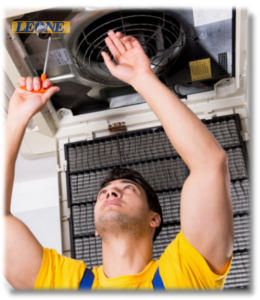 While DIY maintenance and troubleshooting can address minor issues, there are times when it’s necessary to hire a professional air conditioner repair technician. Knowing when to call in the experts can save you time, money, and frustration.
While DIY maintenance and troubleshooting can address minor issues, there are times when it’s necessary to hire a professional air conditioner repair technician. Knowing when to call in the experts can save you time, money, and frustration.
One of the main reasons to hire a professional is when dealing with complex or potentially dangerous electrical components. Handling electrical repairs without proper knowledge and experience can be hazardous. A professional technician is trained to safely diagnose and repair electrical issues, ensuring your safety and the integrity of your AC unit.
Another reason to hire a professional is when dealing with refrigerant-related problems. Refrigerant leaks or improper refrigerant handling can not only impact the performance of your AC unit but also harm the environment. A licensed technician has the expertise to handle refrigerant safely and effectively, ensuring that your AC unit operates efficiently and adheres to environmental regulations.
Furthermore, a professional technician can provide a comprehensive diagnosis of any AC issues. They have the necessary tools, knowledge, and experience to identify underlying problems accurately. This can prevent unnecessary repairs or part replacements, saving you money in the long run.
When hiring a professional technician, it’s important to choose a reputable and licensed company. Look for certifications, read customer reviews, and ask for referrals. A reliable technician will provide transparent pricing, explain the repairs needed, and offer warranties on their work.
How To Save Money On Air Conditioner Repairs
Air conditioner repairs can sometimes be costly, but there are several strategies you can employ to save money without compromising on the quality of the repairs. By being proactive and following these tips, you can keep your AC unit in good shape and your wallet happy.
Regular maintenance is the key to preventing major repairs and reducing costs in the long run. By performing routine cleaning tasks, such as changing the air filters and clearing debris from the outdoor unit, you can maintain the efficiency and performance of your AC unit. Additionally, scheduling professional servicing at least once a year can help identify and address any potential issues early on, preventing them from escalating into costly repairs.
Another way to save money on AC repairs is to address minor issues promptly. Ignoring small problems can lead to more significant damage down the line, resulting in higher repair costs. If you notice any unusual noises, decreased cooling performance, or other signs of trouble, don’t hesitate to call a professional for an inspection. Addressing problems early on can prevent further damage and save you money in the long run.
It’s also essential to choose energy-efficient models when replacing your AC unit. Energy-efficient air conditioners not only provide better cooling performance but also reduce energy consumption and lower your utility bills. Look for units with a high Seasonal Energy Efficiency Ratio (SEER) rating, as they are more efficient and cost-effective in the long term.
Lastly, consider investing in an extended warranty for your air conditioner. While it may require an upfront cost, an extended warranty can provide peace of mind knowing that any unexpected repairs will be covered without additional expenses. Compare warranty options and choose one that best suits your needs and budget.
By following these money-saving strategies, you can keep your air conditioner in excellent condition while minimizing repair costs and saving money on energy bills.
Looking For A Professional Air Conditioner Repair Service?
Regular professional servicing is crucial for maintaining the efficiency and longevity of your air conditioner. Hiring a professional technician ensures that complex repairs are handled safely and accurately. Consider factors such as license, experience, reputation, and pricing when choosing an air conditioner repair service. If you are looking for a trusted and reputable air conditioner repair service in Rochester New York, contact us! Our team of licensed and experienced technicians is here to help.
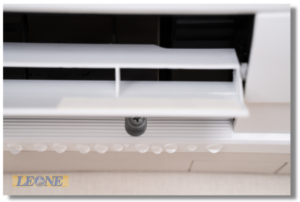 A leaking air conditioner is a very unsettling issue to handle. Looking at your air conditioner water leaking on the floor is such a messy sight. It adds to the discomfort given by the hot summer weather! Why is your air conditioner water leaking and what can be done about it?
A leaking air conditioner is a very unsettling issue to handle. Looking at your air conditioner water leaking on the floor is such a messy sight. It adds to the discomfort given by the hot summer weather! Why is your air conditioner water leaking and what can be done about it?
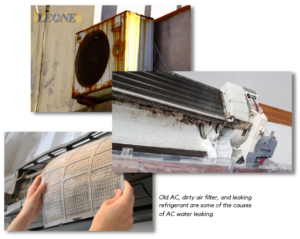 To handle the issue of air conditioner water leaking, you have to be aware of the following causes.
To handle the issue of air conditioner water leaking, you have to be aware of the following causes.
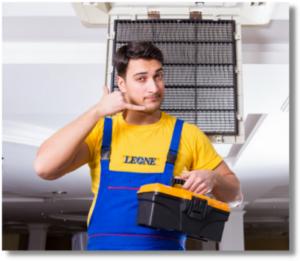 Do You Need Help Fixing Your AC Water Leaking?
Do You Need Help Fixing Your AC Water Leaking?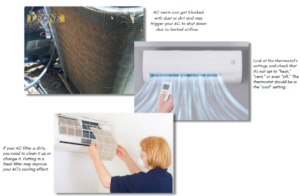
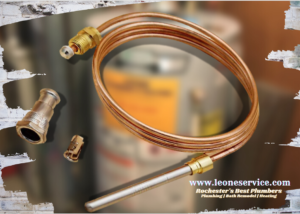 Your water heater is one of your house appliances that serve a lot of benefits for your home. It gives hot water needed for your hot drinks, showers, baths, laundry, and dishes. Every part of it is important especially the water heater thermocouple. But what if it suddenly dysfunctions and needs replacement? Can you replace it by yourself? If you can’t, let us tell you how.
Your water heater is one of your house appliances that serve a lot of benefits for your home. It gives hot water needed for your hot drinks, showers, baths, laundry, and dishes. Every part of it is important especially the water heater thermocouple. But what if it suddenly dysfunctions and needs replacement? Can you replace it by yourself? If you can’t, let us tell you how.

 Are you shoveling snow at least 10 times (or more) every week during winter? Getting rid of snow and ice on your driveway can be a major back sore! With a radiant heat driveway system, you can put aside your shovels during the winter season. If you prioritize safety, installing a heated driveway helps to minimize the safety hazards of slippery pavements. It can also prevent accidents for your loved ones and visitors. If you are considering installing a heated driveway system, we present to you the pros and cons to help you decide.
Are you shoveling snow at least 10 times (or more) every week during winter? Getting rid of snow and ice on your driveway can be a major back sore! With a radiant heat driveway system, you can put aside your shovels during the winter season. If you prioritize safety, installing a heated driveway helps to minimize the safety hazards of slippery pavements. It can also prevent accidents for your loved ones and visitors. If you are considering installing a heated driveway system, we present to you the pros and cons to help you decide.
